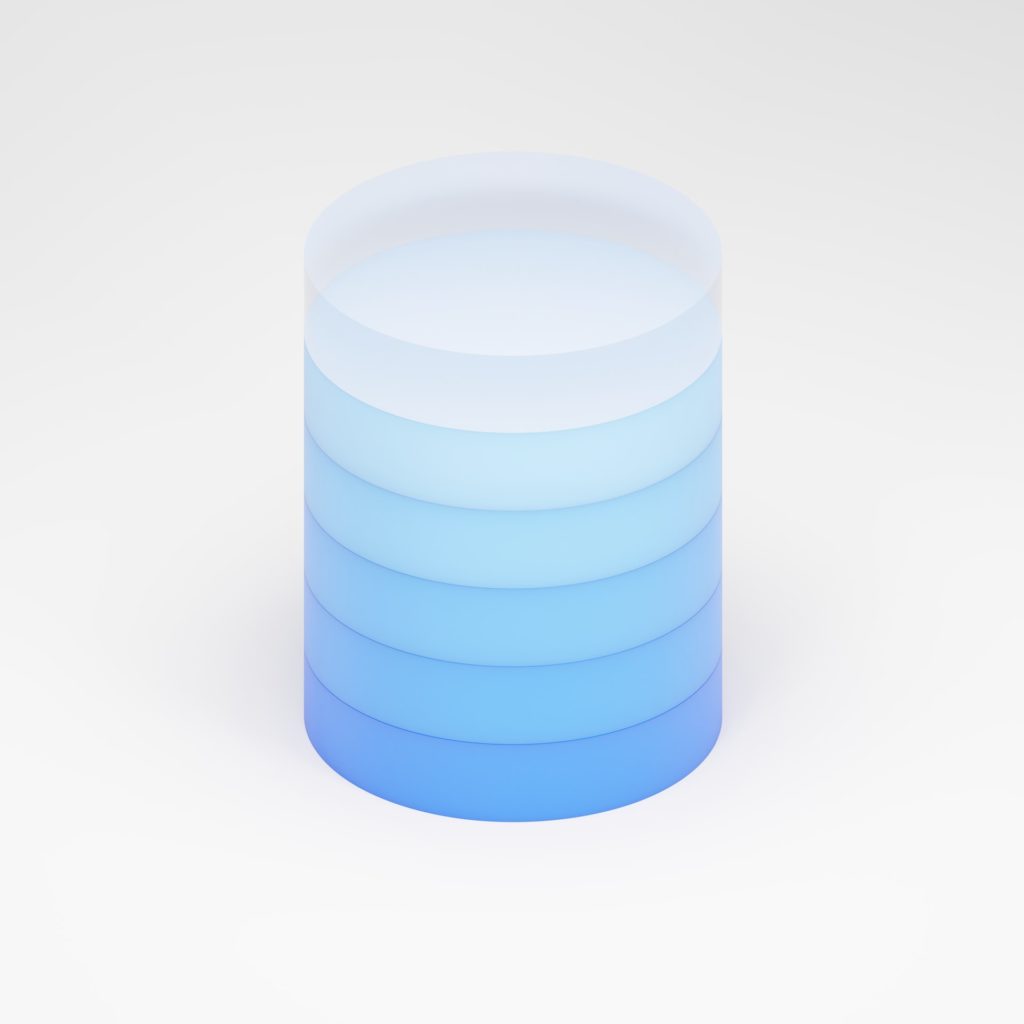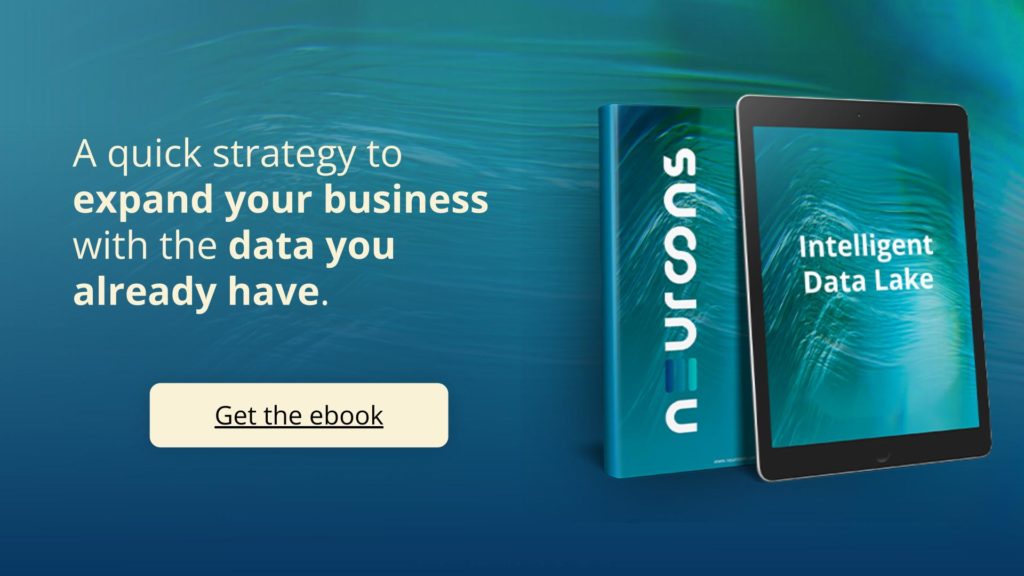
What is Azure Data Lake?
Azure Data Lake is a software developed by Microsoft that allows data of any size, type and velocity to be captured in a single place for analysis.
It is designed to enable analytics on stored data. It is also optimised for performance in data analytics scenarios.
This is why it is called a data lake, because you can throw any information in the back. In addition, the information will remain in its original state without loss of data, even if it is sorted later.
Data is stored in a durable manner by making multiple copies. In addition, there is no limit to the length of time data can be stored.
Also, there is no limit to the account size, file size or amount of data that can be stored in a Data Lake.
Azure Data Lake is a no-limits data storage that powers big data analytics.
How does it work?
Each element of a data lake is assigned a unique identifier and tagged with a set of extended metadata tags.
When we need data, we can ask the data lake for data that is related to our need. Once obtained, we can analyse that smaller data set to help obtain a result.
A common use case for a data lake is to store data coming from IoT (Internet of Things) devices such as temperature control sensors, biometric access control, and surveillance cameras, among others.

Benefits of a data lake
The main benefits of a data lake are:
- Centralisation. It allows gathering, combining and processing data from diverse sources. It may often contain sensitive information that will require the implementation of appropriate security measures in the data lake.
- Security measures in the data lake can be restricted by granting information only to certain data and not to the source.
- Enrich the data. Once the content is in the data lake, it can be normalised and enriched. Like metadata extraction, format conversion or other processes.
- Reduced preparation costs. The particular needs dictate the level of preparation of data. This reduces costs over the initial processing, unlike with warehouses.
- Universal access. From anywhere users can have flexible access to a data lake and its content. This increases the reusability of the content and helps the organisation collect and analise the data needed for decision-making.
- Greater distribution of information: A data lake puts information at the service of the entire company. In this way, the organisation has a greater capacity for action as it has more information.
Key differences between Data Lakes and Data Warehouses
1. Data Lakes can store all data
During the development of a data warehouse, a significant amount of time is spent preparing the data.
Generally, if data is not used to answer specific questions or in a defined report, it can be excluded from the warehouse. In addition, it is not always possible to store all data, and it is necessary to select which data is stored.
However, a data lake stores all data, including future data. And the data lake allows you to keep the data as long as you want and access it at any time.
This makes a data lake more economical in the storage of large amounts of data.
2. A data lake supports all types of data
Data warehouses generally consist of data extracted from transactional systems along with quantitative metrics and the attributes that describe them. The warehouse can ignore non-traditional sources, such as web server logs, sensor data, social media activity, text and images.
The data lake, on the other hand, stores all data regardless of source and structure.
3. A data lake supports all users
In most organisations, 80% or more of the users are “operational”. They want to get their reports, see their KPIs or select the same set of data in a spreadsheet every day. The data lake is often ideal for these users because it is well structured, easy to use and understand, and designed to answer their questions.
4. Data Lakes easily adapt to change
One of the main drawbacks of data warehouses is the time it takes to change them.
In a data lake, on the other hand, data is stored in raw form and is always accessible to anyone who needs to use it. So users have the power to go beyond the structure of the warehouse to explore data in new ways and answer their questions at their own pace.

Important considerations for establishing a data lake
Initially, the relationship between the data lake and the business is essential, as the goal is to provide value that the business is not currently receiving.
Being able to define and articulate this value from a business point of view and convincing partners to join in this journey is very important to its success.
Architectural structure
Once you have the business alignment priorities, it is important to define the initial structure: what are the various components you will need, and what will the final technical platform look like?
You may not have all the answers at the time, so it is important to have an experienced team. In addition, experience and trial and error are essential.
Security
It is important to establish a security strategy, especially if many company units will be using the data lake.
Data privacy and security are critical, especially for sensitive data.
To maintain security, the existence of users with different permissions is essential. If multiple external audiences are being served, each client may have individual data agreements and these must be respected.
I/O and memory model
As part of the technology platform and its architecture, you need to think about what the scaling capabilities of the data lake will be. For example, is decoupling between storage and compute layers going to be used? If so, what is the persistent storage layer?
It is important to establish the performance requirements from a data ingest point of view, which will determine the performance of the storage and the network.
The importance of the human factor and expertise
To set up a data lake, it is essential to have experts who have practical experience in setting up data platforms.
Of course, data scientists who will be the users of the platform are also needed. It is important to involve them during the design stage as they are stakeholders and listen to their requirements,

Operations plan
Think of the data lake from a service level agreement (SLA) perspective: Service Level Agreement (SLA) is a contract that describes the level of service that a customer expects from its supplier.
It is important to establish adequate SLAs in terms of downtime, and in terms of data that is ingested, processed and transformed in a repeatable manner.
Communications plan
It is very important, once the data lake is established, to think of the communication strategy for the platform to thrive and be successfully adopted by the business, to overcome any initial resistance to change that all organisations may undergo.
Disaster recovery plan
Depending on the business criticality of your data lake and the different SLAs you have with different user groups, you will need a disaster recovery plan that can support it. This is basically setting up a protocol with steps, recovery etc. in case something goes wrong and the data lake goes down.
Some disadvantages of data lakes
Depending on the plans there are to scale your business or the amount of data that it produces, a data lake might not be the right fit, and you could benefit more from keeping a warehouse if you already have it:
- Due to the large amount of data stored, much of it may never be processed or analysed.
- There are no integrated views with the other transformed data repositories.
- Flexibility in the data’s structure can lead to loss of quality of stored data and make early identification difficult.
- It may not be easy to delimit data privacy levels, therefore you need to ve very hygienic in your data governance measures.
- To carry out data transformation and analysis, users performing these tasks must have extensive knowledge of both analytics and the possible relationships between source data and business logic. This task can not be developed just by any junior profile.
How can it help your business? How does Neuroons implement Azure Data Lake?
Identify the business problem
This is the first step to be clear about before starting the integration of a data lake. One of the most important steps to ask our experts is what problem we want to solve.
Having a clear business problem is fundamental to lead the work and find the right solutions.
You know, knowing which port we’re sailing, so we find the favorable wind.
Sometimes, it is not a problem, but simply a matter of improving the performance of the business o finding opportunities.
In this case, our experts together with the company’s team will establish the roadmap and the best areas of analysis to start with the optimisation of the company.

Choice of Azure Data Lake tools
Azure Data Lake has different tools for data analysis.
Our experts in collaboration with the client and based on the business problem will select those that best suit each client.
For example, Azure Data Lake has some tools that we will be using in almost every project:
- Azure Data Storage: a tool that is capable of storing information in blocks. It is capable of storing practically any type of information.
- Azure Data File services. A file system for storing information in tables.
Then, our Intelligent Data Lake team will responsible for integrating your data sources into the Azure tools and services.
Data analysis
Once the business problem has been identified, it is time to identify the sources of data to be collected.
In collaboration with the client, our technicians will establish the data that will be part of the Azure Data Lake.
The main advantage here is that, unlike a traditional database, the data lake allows you to store the raw information in the first levels as we will see below. This allows the initial information to always be available for future analysis or in case the information is required.
This is one of the main characteristics and advantages that differentiate a Data Lake from a traditional database.
How does neuroons use Azure Data Lake?
Data screening by category
It is becoming less and less common for problems to be solved with a single level or source of data.
Our technicians establish three levels of data to refine them and make them useful.
- Bronze level. This is raw data directly obtained from information sources such as databases, IoT devices, machinery, intelligent buildings, process and company automation data or any data that could be useful.
- Silver Level. This is the second level of data after the first treatment. The data are already classified, but, even so, a new screening is performed to select and establish the value and usefulness of the data. In this way, the data is again classified in order to refine it towards the resolution of the problem.
- Gold Level. This is the last level and contains the data ready to be shared with at a business level. This is the data that is really useful for the end client. The analysis is then carried out based on the data from this level.
In traditional databases, the information was processed and debugged until it was stored, but this implied a loss of information and processing data that might not be needed.
With the foundation of these levels, the original information can be recovered as it is stored in the first level, but saving costs from not processing unnecessary data.
Future problems or subsequent analyses will have all data still available.
The existence of the Data Lake allows all information to be stored centrally. The KPIs and previous controls allow to isolate in case of information leaks or data that are not being taken into account.
This avoids, as in traditional databases, information that is not being taken into account for analysis.
Establishing these levels helps making the analysis more precise and accurate. It allows to center the analysis on the areas that are really important for the business goals.
Control
Control and monitoring are carried out throughout the above process. Analysis are continuously carried out to avoid losing data, errors in classification or losing important information.
This task is fundamental to guarantee the integrity and accuracy of the information.

Data analysis and decision-making based on Azure Data Lake
Once the data selection and control is done, it is possible to perform the analysis.
Based on the gold level data, our experts and the customer can cross-reference the data. From this analysis, the business team can draw conclusions to solve the problem, identify opportunities, get insights and make decisions.
In many cases, thanks to analysing this data, our experts find information, problems or favorable insights that the client had overlooked. Even questions that weren’t even asked, are solved.
This is the time for the client to make decisions based on the experience and the analysis carried out, as advised by our experts.
Data Lake In-a-Box
If you are thinking a Data Lake solution is only accessible to big corporations, you are wrong.
A data lake can be a very accessible entry level milestone for first-timers and medium-sized companies, as is the case of neuroon’s Data Lake In-a-box.
A scalable, low-cost data repository that allows organisations to easily store all types of data from a variety of sources, and then analyse it to make evidence-based business decisions.
If you can’t think of them, here are some business benefits to a data lake solution
- Flexibility to grow on demand, without a licensing cost-based model.
- Easy scalability, as it is natively designed for this.
- Integrates easily with enterprise business systems.
- Less time and effort with administration tasks.
- Cost-effective data warehousing, due to its cloud approach.
- Support for creating models, whether to classify elements or predict trends, beyond just reporting.
And, since we are very good at our data solutions, Data Lake in-a-box is a solution that can be completed in weeks, not months, and at a fraction of the cost of other enterprise solutions.
Give it a look or learn more about data lake solutions with our free ebook.





